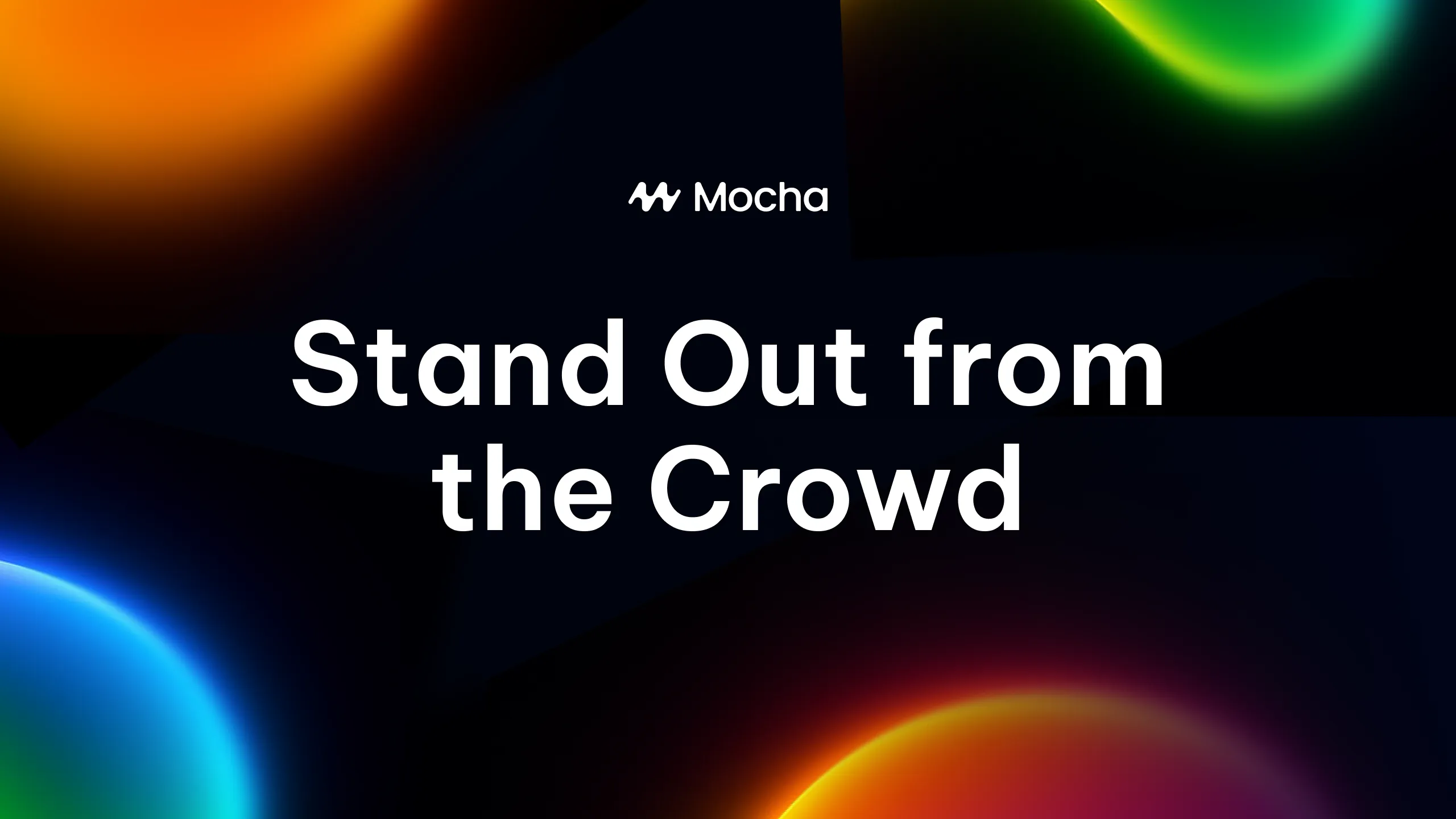How to Make Your AI Generated Website Stand Out

How to Make Your Website Stand Out in an AI-Generated World
The age of template websites is ending.
As AI website builders democratize creation, we face a new challenge: when everyone can create beautiful websites easily, how do you make yours stand out?
The answer isn’t more templates or fancier components.
It’s authenticity, intentionality, and the courage to break convention.
The Homogenization Problem
Look around the web today. You’ll notice a creeping sameness.
Hero sections with centered text over stock images. Three-column feature breakdowns. Testimonial carousels. Footer email sign-ups.
This convergence isn’t accidental. It’s the natural result of template-driven design and “best practice” dogma.
Even first-generation AI website builders have amplified this problem by training on existing websites—learning and reproducing the very patterns that make most sites feel interchangeable.
But standing out isn’t optional. In a digital world where attention is currency, blending in is the same as being invisible.
Beyond Templates: The Authenticity Advantage
True differentiation starts with rejecting the premise that websites should follow established patterns.
Your digital presence isn’t a paint-by-numbers exercise. It’s an expression of your unique vision, value proposition, and voice.
With Mocha’s conversational approach to creation, you have an unprecedented opportunity to break free from convention.
Strategy 1: Intentional Pattern Breaking
Most websites follow implicit rules about structure and flow. Breaking these patterns—with purpose—creates memorable experiences.
Instead of the standard:
- Hero section → Features → Testimonials → CTA
Consider unexpected journeys:
- Immersive story → Problem exploration → Unique solution approach → Invitation to join
Practical Application: “Create a website that begins with a series of provocative questions rather than statements. Instead of telling visitors what we do immediately, I want to engage them in a thought process that leads to our solution naturally.”
This pattern break creates cognitive engagement—visitors must think rather than passively consume.
Strategy 2: Sensory Distinctiveness
Most websites compete on the same sensory level: visual. Adding thoughtful engagement of other senses creates memorable distinctiveness.
Consider:
- Subtle sound design that enhances key interactions
- Animation that responds to user movement or scrolling behavior
- Haptic feedback on mobile that emphasizes important elements
- Interactive elements that require meaningful engagement
Practical Application: “Create subtle audio feedback for important interactions that feels like physical objects connecting—not traditional digital sounds, but organic, satisfying clicks and connections that make the digital experience feel tangible.”
These sensory layers create subconscious memorability that purely visual experiences cannot match.
Strategy 3: Vocabulary Recasting
Every industry develops standardized language that eventually loses impact through overuse.
Recasting your vocabulary with intentionally different terminology creates immediate differentiation.
Instead of:
- Services → Capabilities
- About Us → Our Story
- Contact → Connect
- Blog → Insights
Go further by recasting entire conceptual frameworks in your industry with language that reflects your unique perspective.
Practical Application: “Our consulting company doesn’t offer ‘services.’ Create a section called ‘Transformations’ that presents our work as specific before/after journeys rather than generic service offerings.”
This vocabulary shift forces visitors to engage with your ideas rather than pattern-matching to familiar concepts.
Strategy 4: Intentional Constraint
In an era of infinite possibilities, constraint becomes a powerful differentiator.
Consider:
- Limiting color palette to a single hue plus black/white
- Using only one font throughout the entire experience
- Embracing negative space as a primary design element
- Focusing on a single, powerful message instead of comprehensive content
Practical Application: “Create a website using only black, white, and a single shade of blue. Use negative space as the primary design element, with content appearing in carefully considered moments rather than filling the screen.”
These constraints create a distinctive aesthetic that stands in stark contrast to the maximalist approach of many websites.
Strategy 5: Perspective Shifting
Most websites present information from the company’s perspective. Shifting this viewpoint creates immediate differentiation.
Consider:
- First-person narrative from a customer’s perspective
- Future retrospective (“Looking back from 2030…”)
- Interactive experiences that put visitors in the decision-maker role
- Parallel storytelling that shows multiple perspectives simultaneously
Practical Application: “Create our case studies as first-person narratives from the client’s perspective, written as if they’re explaining to a colleague how working with us transformed their business.”
This perspective shift creates emotional engagement by placing visitors in the protagonist role.
The Implementation Gap (And How to Close It)
Understanding these differentiation strategies is one thing. Implementing them has traditionally been another.
Most website builders—even AI-powered ones—still force you to work within rigid frameworks that reinforce convention rather than challenge it.
Mocha’s conversational approach changes this equation entirely.
Instead of manipulating pre-built components or templates, you simply describe your unconventional vision:
“I want visitors to experience our website as a journey through a problem space, where they encounter challenging questions before we reveal our solution. The navigation should be progressive disclosure rather than traditional menu items, with each section revealing itself only after engagement with the previous one.”
Through vibe-coding, this vision materializes exactly as you describe it—no technical limitations, no template constraints.
Real Results: The Differentiation Effect
Michael runs a cybersecurity firm in a crowded market where most company websites look nearly identical—dark blues, shield icons, and fear-based messaging.
Using conversational creation, he built a radically different digital presence:
- Bright, optimistic colors that countered industry darkness
- Interactive visualizations that made complex security concepts tangible
- Success stories told from the perspective of prevented attacks
- A unique “security posture” assessment that engaged visitors immediately
The result? A 78% increase in qualified leads and a 24% higher conversion rate.
“Potential clients consistently mention that they reached out because our website stood out. In their words, ‘if your thinking about security is this different, we want to work with you.’”
The Courage to Be Different
The strategies above require something beyond technical capability: courage.
Courage to reject conventional wisdom. Courage to trust your unique perspective. Courage to present your vision without dilution.
This courage becomes your competitive advantage. While competitors hide behind industry conventions and safe choices, your authentic distinctiveness becomes a beacon for your ideal audience.
The Practical Path to Distinctiveness
To create a truly distinctive website:
- Audit convention: Identify the patterns and expectations in your industry
- Determine purpose: Clarify what specific patterns you’ll break and why
- Start with conversation: Describe your unconventional vision to Mocha
- Embrace iteration: Refine your distinctive approach through dialogue
- Test with intention: Validate your unique approach with your target audience
Remember: the goal isn’t differentiation for its own sake. It’s authentic distinction that resonates with your ideal audience while alienating those who aren’t a good fit.
The Paradox of AI-Powered Distinction
There’s an interesting paradox in using AI to create distinctive digital experiences.
The same technology that could contribute to digital homogenization becomes, through conversation rather than templates, the most powerful tool for authentic differentiation.
When you describe your unique vision rather than selecting from pre-defined options, AI becomes an amplifier of distinctiveness rather than a force for conformity.
The Future of Digital Distinction
We’re entering an era where website quality will be assumed. Everyone will have access to beautiful, functional digital experiences.
In this landscape, strategic differentiation becomes the primary competitive advantage—the ability to create digital experiences that reflect a unique perspective rather than industry conventions.
The barrier between imagination and implementation is dissolving. The courage to be distinctive will replace technical capability as the limiting factor in digital success. The future belongs to those whose digital presence reflects their authentic vision, not industry templates.
Make your website stand out by making it truly yours.

